From the Great Oxidation Event to how Earth is dimming, we look at a selection of stories about how climate changes have affected the Earth in the distant past, the recent past, and the current time. Plus, we review an app called MeteorActive.
Podcast
Show Notes
The future of planetary mistaken identity
- Cornell University press release
- “The Solar System as an Exosystem: Planet Confusion,” Dean Robert Keithly and Dmitry Savransky, 2021 September 23, The Astrophysical Journal Letters
Planet 10???
- Evidence Indicates There’s Another Planet the Size of Mars in Our Solar System (Interesting Engineering)
- “Transneptunian Space,” Brett Gladman and Kathryn Volk, 2021 September, Annual Review of Astronomy and Astrophysics
Mega constellations of satellites may outshine stars
- Satellite swarms may outshine the night sky’s natural constellations (Science News)
- “Visibility Predictions for Near-Future Satellite Megaconstellations: Latitudes near 50 Degrees will Experience the Worst Light Pollution,” S. M. Lawler, A. C. Boley, and H. Rein, submitted to AAS Journals (preprint on arxiv.org)
Dunes on Mars show the wind
- GSA press release
- “Interaction bounding surfaces exposed in migrating transverse aeolian ridges on Mars,” Mackenzie Day, 2021 September 30, Geology
Great Oxidation Event contradiction explained
- ASU press release
- “Reconciling evidence of oxidative weathering and atmospheric anoxia on Archean Earth,” Aleisha C. Johnson et al., 2021 September 29, Science Advances
Volcanic eruptions lead to rain lead to giant dinosaurs
- A volcano-induced rainy period made Earth’s climate dinosaur-friendly (Science News)
- “Volcanically driven lacustrine ecosystem changes during the Carnian Pluvial Episode (Late Triassic),” Jing Lu et al., 2-21 October 5, PNAS
Humans: Making snow dark for millennia
- Ca’ Foscari University of Venice press release
- “Five thousand years of fire history in the high North Atlantic region: natural variability and ancient human forcing,” Delia Segato et al., 2021 July 20, Climate of the Past
Earth getting dim with climate change
- AGU press release
- “Earth’s Albedo 1998–2017 as Measured From Earthshine,” P. R. Goode et al., 2021 August 29, Geophysical Research Letters
Transcript
Hello and welcome to the Daily Space. I am your host Dr. Pamela Gay.
And I am your host Beth Johnson.
And we are here to put science in your brain.
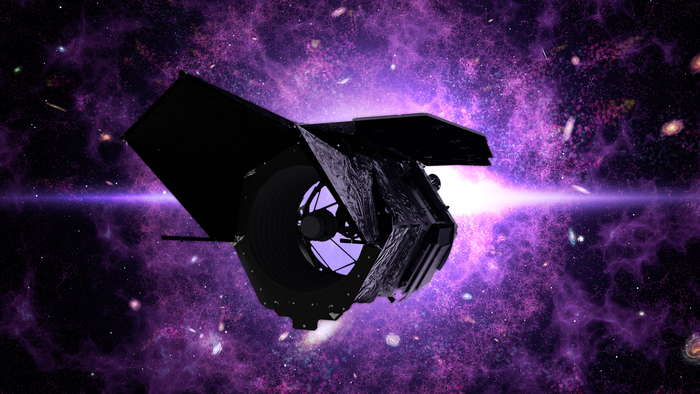
All around the world, a new generation of ground and space-based telescopes are under construction, and with them, we will finally be able to resolve the light of individual planets as they orbit around their stars. It is hoped that in the next decade we will find that Earth 2 – that world like ours that offers us a clear dream of finding life.
But new research, appearing in The Astrophysical Journal Letters and performed by Dean Robert Keithly and Dmitry Savransky, makes it clear that looking for that world and knowing for sure that we’re looking at it and not one of its siblings is going to be harder than we thought.
By and large, planets orbit stars in disks. When those disks are aligned so we’re looking straight down on the system, everything is simple, and we can watch the worlds – assuming we build the right telescopes – orbiting in a set of nesting orbits that keep them easy to tell apart. When a system becomes edge-on, however, everything becomes chaos. The worlds appear to bounce back and forth on overlapping lines, and because they are all at different distances, it is possible for a more distant gas giant to line up on the sky with a closer world, or for a super close and previously undetected world to appear shining bright.
Using computer models to imagine how our solar system would appear to observers all around the sky, they found that the differences of sizes and distances allowed Earth and Uranus to be mistaken for one another; we are after all both just pale blue dots. In other model solar systems, they found: …an Earth-like planet could be misidentified with a Mercury-like planet in 36% of randomly generated solar systems; with a Mars-like planet in about 43% of randomly generated solar systems; and with a Venus-like planet in more than 72% of randomly generated solar systems.
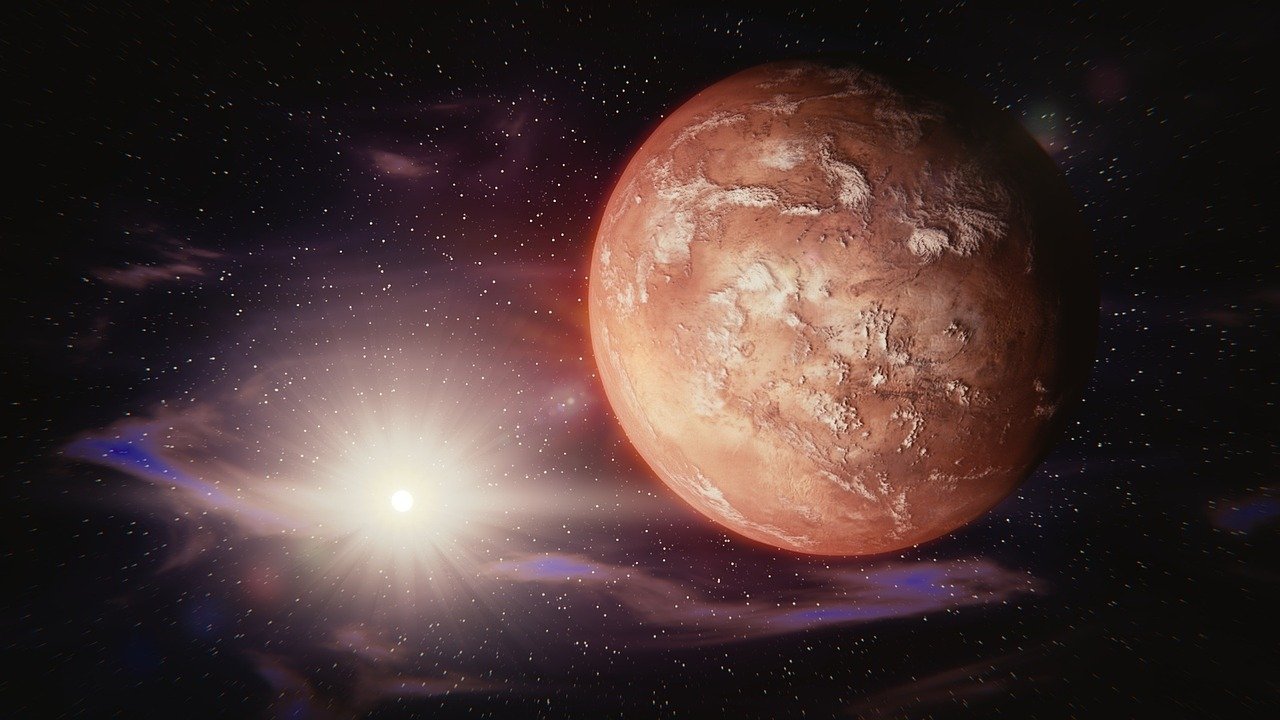
Similar issues arise in looking at the Galilean moons of Jupiter, but with a few weeks of consistent observing, those can be fairly well sorted. Since time is rare, we can only hope that when the time comes, we’ll be able to get access to the telescope time needed to sort alien Earths from Alien Uranuses.
We really shouldn’t be surprised that it is hard to understand alien solar systems. After all, we still haven’t fully sorted our own solar system! It’s been known for several years that the orbits of icy objects point toward there being a massive Planet 9 in the outer solar system. Now, a review paper by Brett Gladman and Kathryn Volk hints that maybe, just maybe, another Mars-sized world is out there too. We’re going to try and get the researchers on our show so they can explain this exciting news themselves. I, for one, welcome future planet discoveries.
The trick is going to be seeing those planets before we lose our sky to the reflected light of satellites. This year along, humans have launched more than 1,000 satellites into orbit, and the rate of growth in the satellite-based internet provider industry points to a future where the question isn’t “cable, DSL, or fiber” but Amazon, Starlink, or, well, there are a lot of potential options.
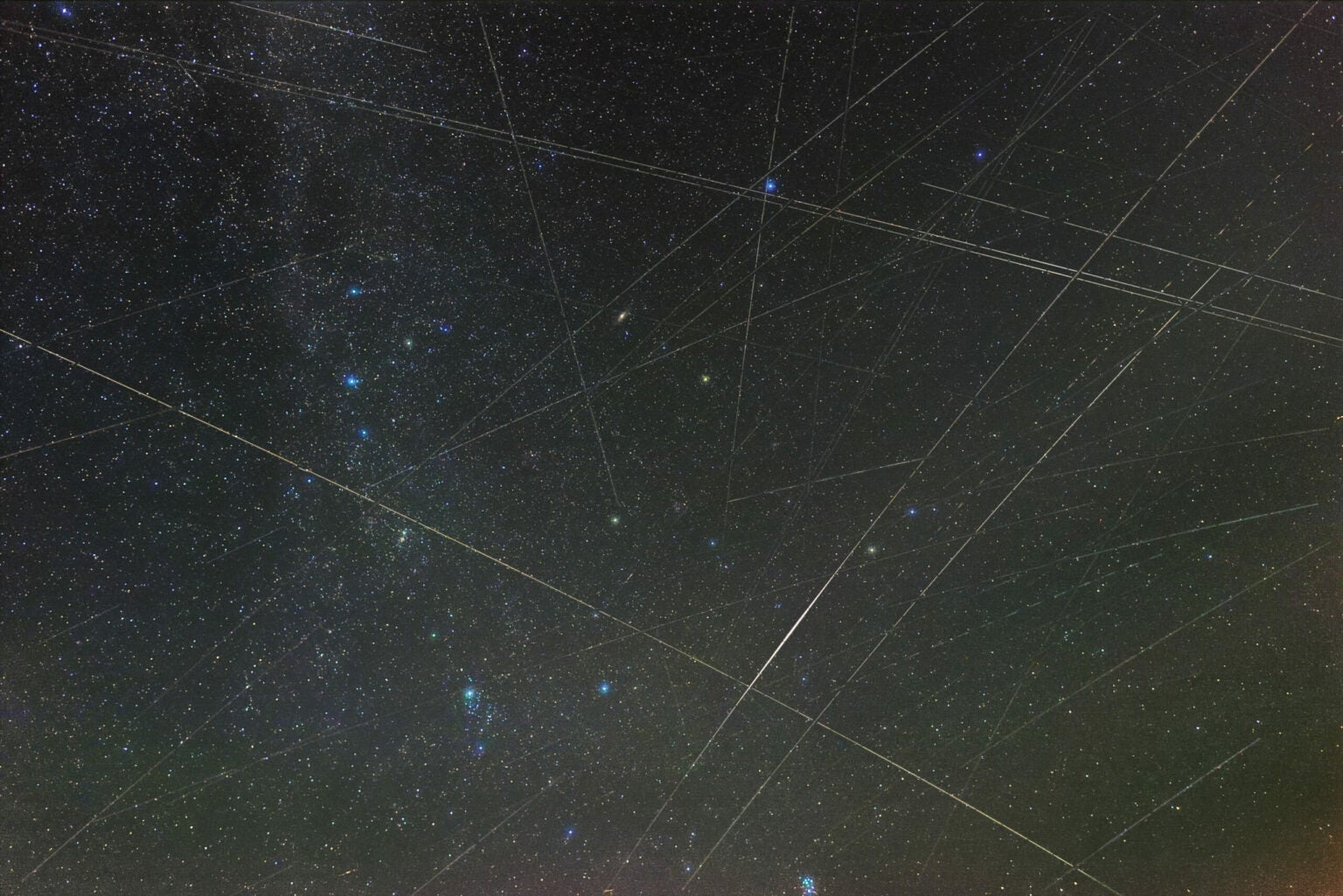
In new simulations of what the sky will look like once all the intended networks are built, researchers find that for observers in certain unfortunate bands around the Earth, the future sky will shine brighter in satellites than in stars. According to Samantha Lawler, whose work is posted on arXiv: I think we really are at a transition point here where right now, seeing a satellite, or even a Starlink train, is cool and different and wow, that’s amazing. She goes on to explain that in the currently planned future: Every sixteenth star will actually be moving.
I, for one, do not welcome this satellite-internet future.
When we can’t look up, sometimes it’s easier to just look around or even down. Orbiters above Mars and rovers on Mars are making it possible for us to see the wind. And I’m not talking Disney lyrics here; we are not painting with all the colors of the wind or anything ear wormy like that. No, we are talking about how the flowing dunes on Mars’s surface allow us to see the direction the wind is pushing the sands of Mars, and when two dunes collide, it lets us see how the winds and dust are structured and mix.
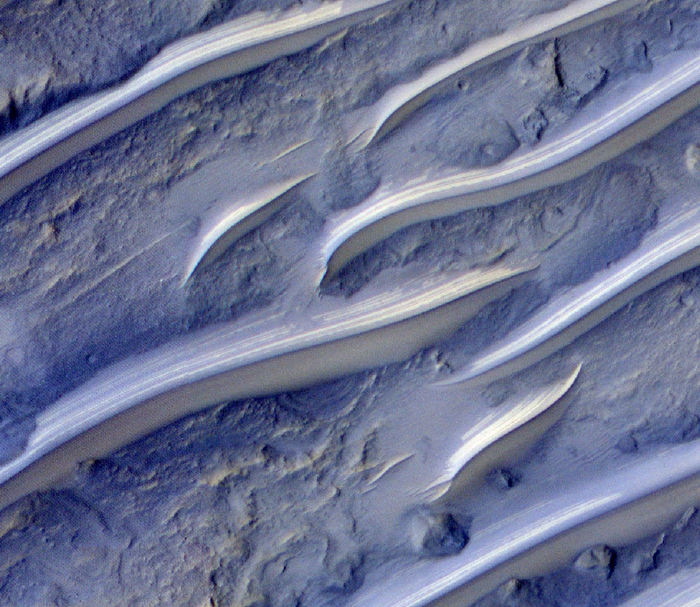
In a new study in the journal Geology, researcher Mackenzie Day looks specifically at the interaction of colliding dunes on Mars. According to the release on this work: In the Iapygia region of Mars, [wind altered dune] ridges incorporated both light and dark sands, leading to light-dark banding in the upwind side of the ridges. Banding occurring only on one side of the ridges suggests that the banding formed as the ridges migrated. Furthermore, the dune-interaction pattern known from Earth can be seen in some ridges where the banding is truncated and then reconnects, just like two dunes touching and then combining downwind.
As a human, I find this work beautiful, and as a scientist, it’s cool to know that sand dunes tell us so much about what we currently can’t see.
These next two stories bring us closer to home, but farther away in time.
Earth hasn’t always been a habitable planet, at least not for life as we currently know it. Then about 2.4 billion years ago, something changed. That something is called the Great Oxidation Event, where global oxygen levels rose significantly, and it radically transformed both our atmosphere and our biosphere, making the diversity of life we have now possible.
And this event has always been something of a mystery because the evidence has contradictions. Now, in a new paper published in Science Advances, a team of scientists lays out how they may have solved the contradictions.
First off, some scientists argue that since we’ve not found evidence of oxygen in the rock record dating back to before the Great Oxidation Event, it must not have been there. But on the other hand, recent work has shown that some common minerals will vigorously react and break down in the presence of oxygen, and those reactions allow minerals like molybdenum to accumulate in rivers and oceans, which we have found in the rock record prior to the event. That’s confusing, to say the least, but there had to be an answer, right?
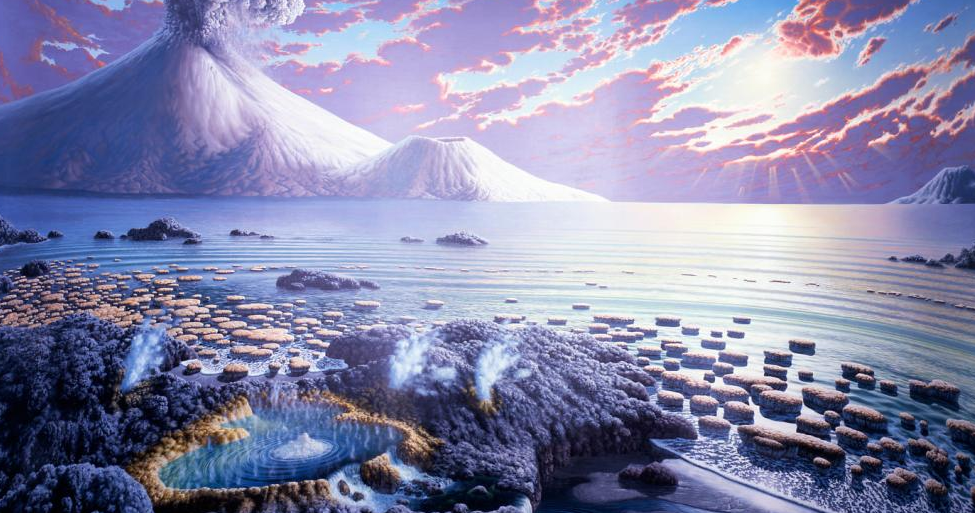
Once again, scientists turned to computer modeling for the solution, as that pesky time machine still isn’t ready. When you cannot observe directly what the answer is, you take all your information and evidence, roll it into a nice ball of code, and let the computer do the baking. So lead author and graduate student Aleisha Johnson and her team did just that, including everything they had on the molybdenum and on mineral reactions with oxygen, and the computer model showed that the amount of oxygen required was so small that it wouldn’t have turned up in the rock records anyway.
Study co-author Ariel Anbar explains: There’s an old saying that ‘absence of evidence is not evidence of absence. Until now, our ideas about oxygen being absent before the Great Oxidation Event were mostly shaped by an absence of evidence. Now we have reason to think it was there — just at lower levels than could be detected before.
It’s even possible that those small amounts of oxygen were being generated by biology, and that’s interesting for a lot of reasons. In particular, we could apply what we learn to observations of exoplanets. Or as Johnson sums up: Our hope is that these constraints on ancient atmospheric oxygen help us understand the cause and nature of the Great Oxidation Event. But this isn’t just about Earth history. As we begin to explore Earth-like worlds orbiting other stars, we want to know if oxygen-rich atmospheres like ours are likely to be common or rare. So this research also helps inform the search for life on planets other than our own.
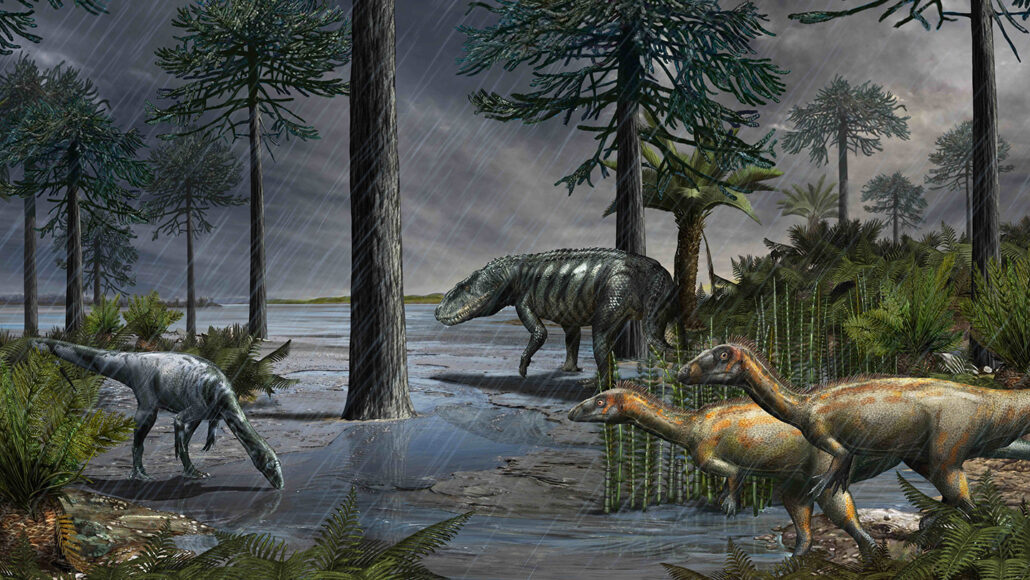
Of course, before we can get to life as we know it today, we have to go through a very long period of, well, dinosaurs. Oxygen may have made the rise of diverse life possible, but just how did dinosaurs evolve into the hulking beasts they once were? It turns out that volcanoes may hold the answer.
Dinosaurs weren’t always gigantic monsters. They started out cat-sized. And then came two million years of rain caused by four major pulses of volcanic activity, and almost overnight, dinosaurs were huge and dominating the planet.
Scientists have now analyzed sediment found deep under an ancient lake bed in China that shows the link between the volcanic eruptions and the massive amounts of rainfall, which turned the Earth into a “hot and humid oasis” during the very hot and dry Triassic Period. The period lasted from 234 million to 232 million years ago and is called the Carnian Pluvial Episode, and that’s around the same time we see dinosaur fossils go from small to huge.
The results of the analysis of the core samples were published in PNAS, and they show that mercury entered the lake. Mercury is a sign of volcanic ash, and it gets washed into the lakes from the land near the eruptions. Additionally, the team found different types of carbon, and those correspond to four different eruption events, which would have released massive amounts of carbon dioxide. And then there were microfossils and pollens, which showed a change from species inclined toward dry climates to species that prefer it warm and humid.
All that rain and humidity caused plants to thrive and become huge first, which in turn, made space (and food) for the domination of the dinosaurs to start. It’s impressive what we can learn from sedimentary rocks.
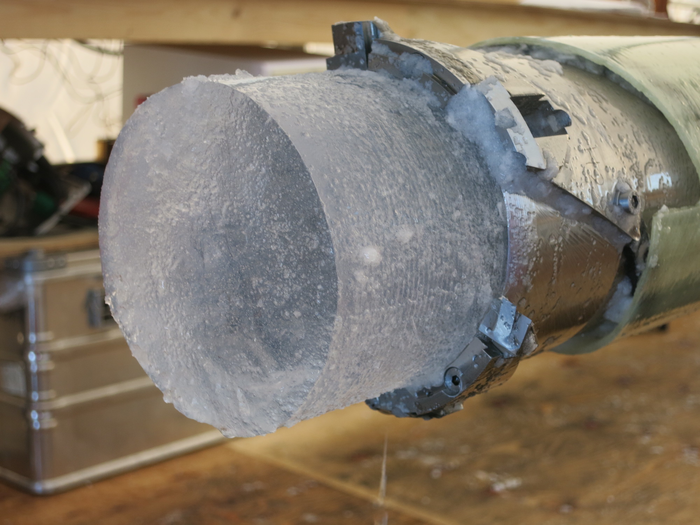
Looking back through the history of our world, it is unfortunately easy to spot where humans started to build societies. On the one hand, we have a history of killing things, and as humans trekked across the world, we killed a lot of life forms, and things like the woolly mammoths disappeared in lockstep with our arrival. We also did need uniquely human things like fires, which give off smoke, ash, and other air pollutants. As someone who has lived in snowy places most of my life, I know snow, if nothing else, is good at showcasing pollutants as it collects various bits of auto exhaust, fireplace exhaust, animal biproducts, and other pollutants. It turns out that what I grew up seeing in the snowbanks of Boston can be studied in the “didn’t completely melt” snows of the extreme north and south.
An ice core collected in Iceland contains 4,500 years of data on how fires did and didn’t flare up in the North Atlantic. And here is where I remind you that not all fires are man-made. About 1,100 years ago, according to this ice, fires sharply decreased in number. Researcher Delia Segato explains: The Viking colonisation of Iceland caused one of the first environmental disasters in history and even today, after a millennium, the Icelandic forests have not fully recovered. The Vikings deforested extensively, causing the loss of more than 25% of vegetation in less than a century. The settlers, following the customs of their native lands, used to cut down birch tree forests to collect wood and to remove the shrubs to open grazing lands
So for many centuries, we saw a decrease in smoke pollution in the ice that reflected humanity’s ability to log anything into looking like pasture land. Unfortunately, things have changed in more recent times. Segato goes on to say: In the two most recent centuries, we have found that fires have increased due to climate change and emissions caused by human activity. The results of the study show that regions at extreme latitudes represent one of the first places on Earth where climate change is having the most catastrophic effects. At the end of summer 2020 alone, fires in the Arctic Circle caused the emission of 244 megatons of CO2, exceeding by 35% those recorded in 2019. In these areas it is therefore essential to improve the understanding of climate trends and the history of fires.
This work appears in the journal Climate of the Past.
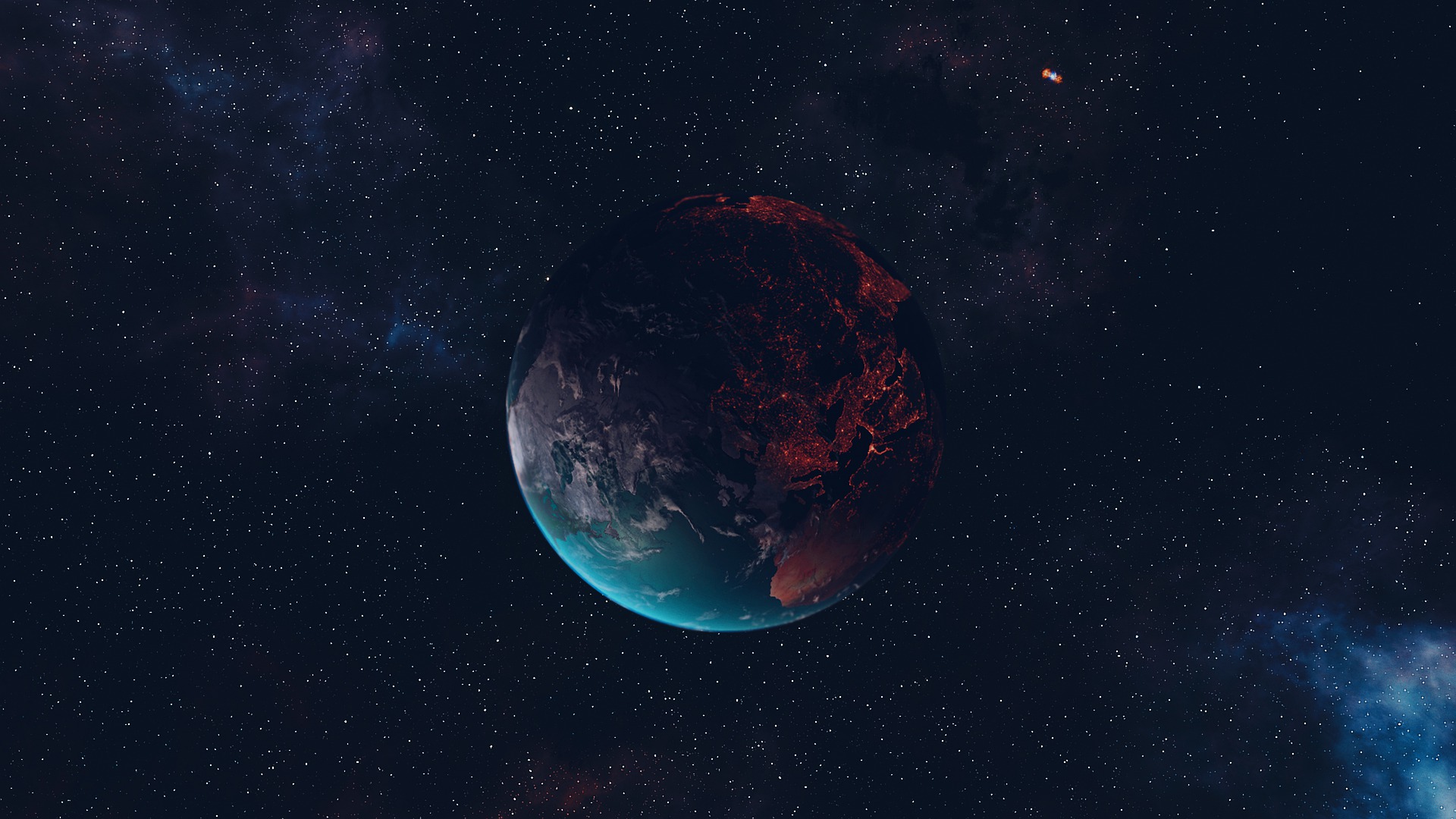
There are days I really hate understanding science, because without radical change and governmental investment, things are only going to get worse, and through science, we just keep finding new ways things will change that I just don’t like. This next one, though, causes super mixed emotions but might make a good science fiction book plot.
As climate change advances, our world is reflecting less sunlight off snow and absorbing more sunlight into the dirt and plant-covered landscapes. This means our world is literally getting less shiny. Warming oceans also mean fewer ocean clouds to reflect sunlight, and all in all, if you’re looking at our world from another world, we’re going to get ever-so-much dimmer. It’s not a big effect, but, if you are in the mood to make yourself less visible to aliens, this is one way to do it. In the last twenty years we’ve dimmed about half a percent; not that big an effect, but still noticeable and still going on, so it’s going to be interesting to see how this evolves over time.
And by interesting, I’m using the definition from Firefly of OMG OMG, we’re all going to die! Or least the snow and the puffy ocean clouds are all going to die, and…
Review
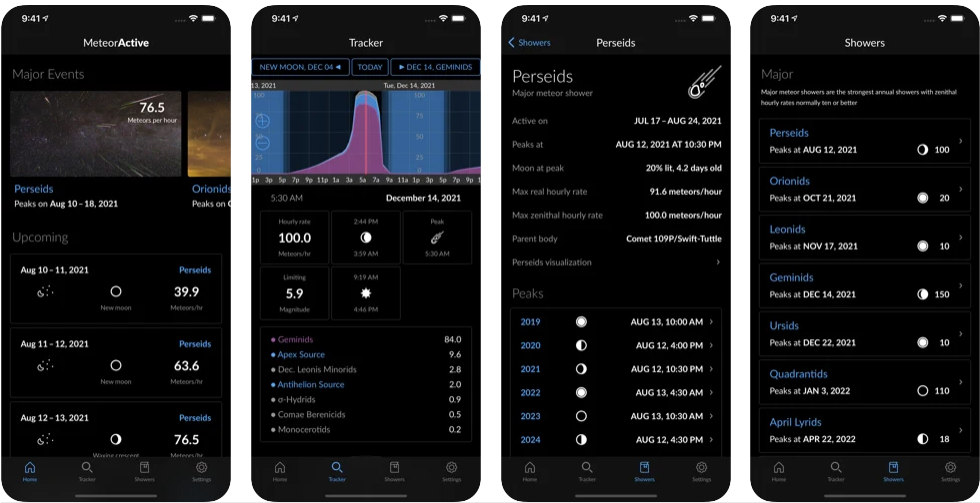
MeteorActive for iOS by Alexander Vasenin.
[No transcript available.]
This has been the Daily Space.
You can find more information on all our stories, including images, at DailySpace.org. As always, we’re here thanks to the donations of people like you. If you like our content, please consider joining our Patreon at Patreon.com/CosmoQuestX.
Credits
Written by Pamela Gay and Beth Johnson
Hosted by Pamela Gay and Beth Johnson
Audio and Video Editing by Ally Pelphrey
Content Editing by Beth Johnson
Intro and Outro music by Kevin MacLeod, https://incompetech.com/music/


 We record most shows live, on Twitch. Follow us today to get alerts when we go live.
We record most shows live, on Twitch. Follow us today to get alerts when we go live.